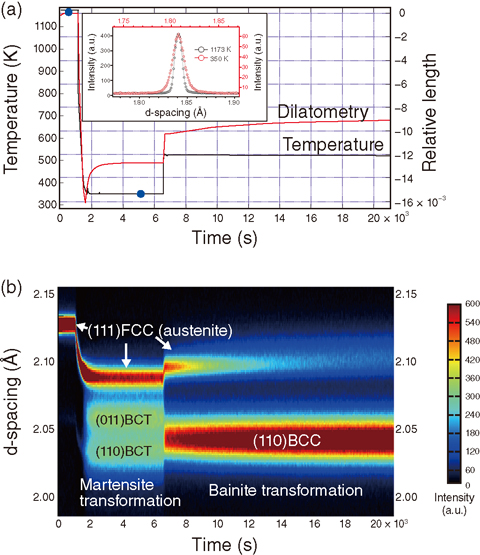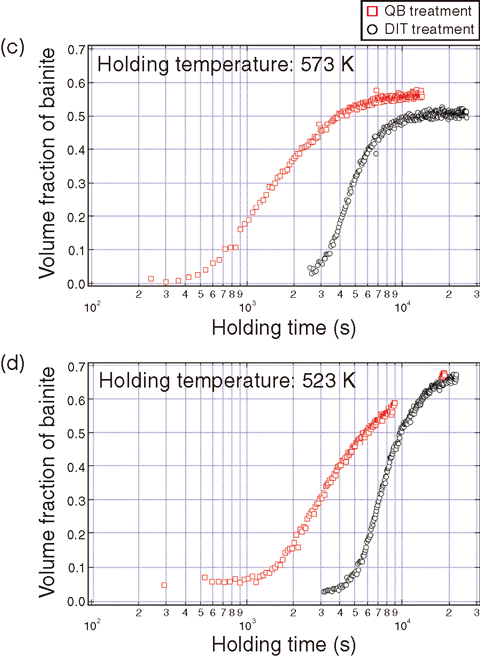
Fig.5-34 Experimental results of QB treatment

Fig.5-35 Comparison of bainite transformation kinetics between DIT and QB treatment at isothermal temperatures of (c) 573 K or (d) 523 K
Nano-bainite steels were designed through alloying to form a bainite structure in the low temperature region of 473-673 K after austenization. These steels with a microstructure comprising nanoscaled laths/plates of bainitic ferrite and carbon-enriched film austenite have been found to exhibit a tensile strength greater than 2 GPa and a fracture toughness of 30 MPa·m1/2. However, their extremely slow bainite transformation speed has hindered their engineering applications. Therefore, accelerating the bainite transformation is a necessary issue for further applications of these steels.
To achieve the above demand, we focused on a partial quenching and bainite transformation (QB) treatment. An in situ neutron diffraction technique was employed to clarify the effect of partial quenching on the following bainite transformation. The in situ neutron diffraction experiments were performed using the engineering neutron diffractometer, TAKUMI, at the J-PARC. The chemical composition of the steel used in this study was Fe-0.79C-1.98Mn-1.51Si-0.98Cr-0.24Mo-1.06Al-1.58Co (wt%). The obtained diffraction profiles were analyzed by the Z-Rietveld code to determine the phase fraction and lattice parameter of each constituent. The convolutional multiple whole profile (CMWP) method was employed for profile analysis to determine the dislocation density and substructure.
The heat treatment route and the corresponding dilatometry curve are shown in Fig.5-34. When the specimen was cooled from 1173 K to 350 K, the austenite phase (face-centered cubic, fcc) transformed into the martensite phase (body-centered tetragonal, bct). After reheating and holding the specimen at 523 K, the behavior of the growing of bcc (body-centered cubic) peaks together with the decrease of the intensity of the austenite peaks implied the operation of a bainite transformation. Fig.5-35 shows a comparison of the kinetics for a direct isothermal bainite transformation (DIT) and for the QB treatments at 573 K and 523 K, respectively. As can be seen, the bainite transformation occurs more quickly under QB treatment than it did under DIT. A comparison of the austensite diffraction peaks around the martensite transformation (collected at the time marked by blue points in the heat-treatment route in Fig.5-34(a)) shows that an apparent peak broadening occurred after the martensite transformation. The CMWP analysis showed that high-density dislocations were introduced into austenite through the progress of the martensite transformation. The dislocations introduced in austenite by accommodating the shape strain of the martensite transformation are believed to have assisted in following bainite transformation.
The in situ neutron diffraction technique is useful for the observation of the structure change in steel during heat treatment, which is difficult for conventional methods. In the future, neutron diffraction technique is expected to play an important role in the studies of steels.